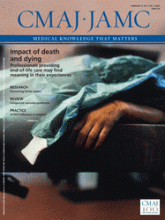Patients taking antiplatelet or anticoagulation agents require blood tests before any non-emergent interventional radiology procedure
Before any interventional radiology procedure, including biopsy and abscess drainage, patients should have testing to determine the complete blood count (including platelet count), activated partial thromboplastin time and international normalized ratio.1 The tests should be done as close to the time of the procedure as possible. For stable patients, the timing of blood tests should be within one week of the procedure, in general.
Antiplatelet and anticoagulation therapy should be temporarily stopped, if possible, to achieve optimal coagulation before the procedure
The risk of secondary bleeding from the procedure must be weighed against the risk of complications because of cessation of anticoagulation.2 Discussion of risks with a relevant consultant and the treating radiologist may be warranted. Care must be taken in withholding medications in patients taking acetylsalicylic acid for secondary prevention following coronary stenting or a stroke.3
An inability or insufficient time to reverse the patient’s anticoagulation status does not necessarily preclude the procedure
In this situation, discussion with the treating radiologist is warranted. Reversal agents may be required to ensure patient safety; these include vitamin K for warfarin; protamine sulfate for heparin; fresh frozen plasma or platelet transfusion; cryoprecipitate in acquired or congenital fibrinogen deficiency; recombinant factor VIIa; and desmopressin.2,4
Some published data suggest that reversal may not be necessary in patients with liver disease and mild coagulopathy.5
Recommendations for temporarily stopping specific anticoagulation and antiplatelet agents vary
Suggested time frames for temporary discontinuation of specific medications are outlined in Appendix 1 (www.cmaj.ca/cgi/content/full/cmaj.090586/DC1). Temporary discontinuation of acetyl-salicylic acid and nonsteroidal anti-inflammatory drugs may not be necessary for some procedures of lower or moderate risk, and individual practice may vary.1
Some patients receiving long-term anticoagulation (e.g., those with prosthetic heart valves or within three months of acute venous thromboembolism) may require “bridging” anticoagulation with heparin or low-molecular-weight heparin.
A lack of evidence contributes to variation in clinical practice
The variation in clinical practice is due in part to a lack of evidence from randomized controlled trials. Data from open surgical procedures may not apply to interventional radiology procedures, because those procedures involve open, direct visualization of any bleeding sources that occur.4 The individual patient’s comorbidities and prior history of bleeding, as well as the specific interventional radiology procedure to be performed and associated “bleeding risk,” will influence the preparations needed. In cases where the referring clinician is unsure, consultation with the treating radiologist is recommended.
Footnotes
-
Competing interests: None declared.
-
This article has been peer reviewed.
-
For references, please see Appendix 2, available at www.cmaj.ca/cgi/content/full/cmaj.090586/DC1








